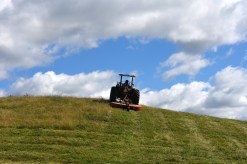A Step-by-Step Guide: Training Your Puppy Basic Commands

Welcoming a new puppy into your home is an exciting and joyful experience. However, it’s important to remember that puppies require guidance and training to become well-behaved companions. One of the first things you should focus on when training your puppy is teaching them basic commands. These commands not only help establish a line of communication between you and your furry friend but also ensure their safety and make daily routines more manageable. In this step-by-step guide, we will walk you through the process of training your puppy basic commands.
The Importance of Basic Commands
Training your puppy basic commands is crucial for several reasons. Firstly, it establishes the foundation for all future training sessions. Basic commands like “sit,” “stay,” “come,” and “down” form the building blocks upon which you can build more advanced skills such as leash walking or tricks. Secondly, these commands help keep your puppy safe in various situations. Being able to call your pup back with a simple “come” command can prevent accidents or dangerous encounters with other animals or vehicles. Lastly, teaching basic commands promotes good behavior and manners in your pup, making them a well-behaved member of society.
Getting Started with Training
Before diving into training sessions, it’s essential to set up a conducive environment for learning. Choose a quiet area with minimal distractions where you can focus solely on training exercises with your pup. Ensure that both you and your puppy are in the right mindset – calm, patient, and ready to have fun.
Start by introducing one command at a time, beginning with the easiest one – “sit.” Hold a small treat close to your pup’s nose while moving it slowly upwards above their head. As their nose follows the treat, their bottom will naturally lower into a sitting position. Once they are in the sitting position, say the word “sit” and reward them with the treat. Repeat this process several times, gradually phasing out the treat until your puppy can sit on command without a food incentive.
Reinforcement and Practice
Consistency and reinforcement are key when training your puppy basic commands. After your pup has learned the first command, gradually introduce the next one. Remember to always use positive reinforcement techniques such as treats, praises, or toys to reward your pup for correctly following a command. This positive association encourages them to repeat the behavior in the future.
Practice each command in various environments and situations to ensure that your puppy understands them regardless of distractions or changes in their surroundings. Start with practicing indoors in different rooms and gradually move to outdoor settings like your backyard or local park. Practicing commands during walks is also beneficial as it helps reinforce leash manners and ensures that your pup listens even when excited.
Troubleshooting Common Challenges
During the training process, you may encounter some challenges or setbacks. It’s important to remember that every puppy learns at their own pace, so be patient and persistent in your efforts. If your pup seems uninterested or distracted during training sessions, try using higher-value treats or finding a quieter environment to capture their attention.
If your puppy consistently fails to respond to a command, it might be helpful to revisit earlier steps of training for reinforcement. Ensure that you are using consistent verbal cues and hand signals for each command and avoid confusing your pup with similar-sounding words.
Additionally, consider seeking professional help from a certified dog trainer if you’re facing difficulties in training basic commands. They can provide personalized guidance tailored to your specific situation and help address any underlying behavioral issues that may be hindering progress.
Conclusion:
Training your puppy basic commands is an essential part of their development as well as building a strong bond between you and your furry companion. By establishing clear communication through these commands, you ensure their safety, promote good behavior, and make daily routines more manageable. Remember to be patient, consistent, and reward your pup for their efforts. With time and dedication, your puppy will master these basic commands and become a well-behaved member of your family.
This text was generated using a large language model, and select text has been reviewed and moderated for purposes such as readability.





